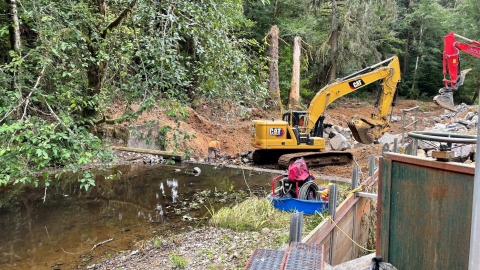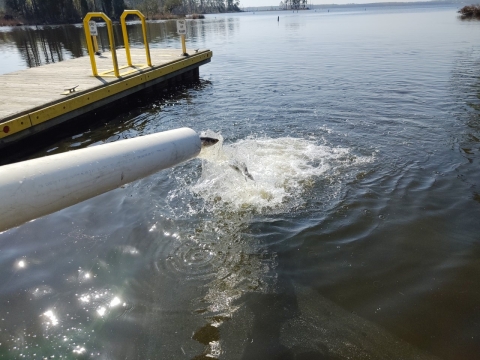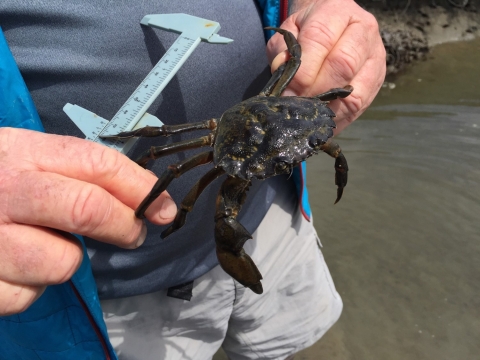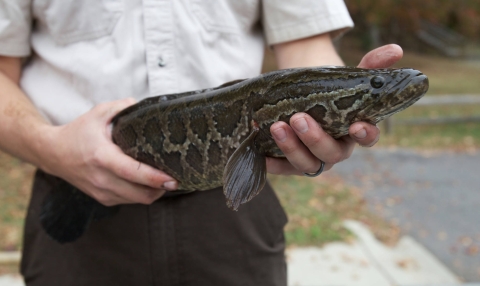What We Do
Hazard Analysis and Critical Control Point (HACCP) Planning is about risk management. It features five integrated steps that can reduce the risk of spreading invasive species invasive species
An invasive species is any plant or animal that has spread or been introduced into a new area where they are, or could, cause harm to the environment, economy, or human, animal, or plant health. Their unwelcome presence can destroy ecosystems and cost millions of dollars.
Learn more about invasive species and other non-targets via human-based pathways. HACCP examines activities to determine if and when invasive species might be unintentionally moved. Where this potential exists, the tool helps to identify the most effective opportunities during an activity to reduce that risk and the specific control measures that are needed. Safeguards are included through the use of Prescribed Ranges, Limits, or Criteria (PRLC, previously called a control limit) and corrective actions that ensure that control measures (also known as preventive measures) are operating as intended.
The Five Steps of HACCP Planning
1. Describe the activity: The activity description includes specific information such as the who, what, when, where, how, and why of the project. The description offers a historical, working reference to facilitate plan review and communication with facility staff and other resource management personnel.
2. Chart the flow of tasks for the activity:This step provides an important visual tool that the HACCP team can use to complete the remaining steps of the plan. Here, a clear and concise, yet complete description of the tasks necessary tcomplete the overall activity is diagramed in a linear fashion.
3. Identify potential non-targets:Any species that has a reasonable potential to be moved or introduced to new habitats should be identified to implement appropriate control measures to prevent an unintended invasion.These may include vertebrates, invertebrates, plants, or other organisms (e.g., diseases, pathogens, and parasites).
4. Analyze the risk of moving non-targets:It is crucial to identify significant non-targets with respect to each required task within a larger activity so that effective measures to control them may be employed. During the analysis, the significance of each potential non-target is assessed by considering its risk of being moved within each individual task.
5. Completing the action plan: The action plan addresses specific methods to control risks of non-target species. It lists specific information about controls, monitoring procedures, methods for evaluation, and corrective actions.
Our Services
The Service has developed a training curriculum to train its employees and those in other federal and state agencies, partner tribes, and conservation organzations to identify critical control points to prevent or reduce significant hazards that could be caused by unintentionally creating pathways for invasive or non-targeted species.
We focus our attention on critical control points within carefully-defined activities where we can most effectively prevent or remove invasive or non-target species. Our HACCP plans:
- Document the risks of unintended introductions
- Define the methods we should use to remove non-target species (for some pathways, risks might outweigh the benefits of a planned activity)
- Provide employees with reliable information to help them make consistent management resource decisions based on identified risks
- Build a logical framework we can use to weigh risks of spreading invasive or non-target species against conservation management benefits, and
- Create reference sources that document best management practices and procedures we share with other offices and the provide sector to reduce the risk of species spread through pathways with similar characteristics.
Our HACCP planning framework focused on aquatic invasive and non-target species. When you work with the Service or receive our training, we will work together or you will be trained to develop HACCP plans that:
- Describe and diagram planned activities;
- Identify potential hazards
- Analyze each activity and define effective critical control points to reduce hazards, and
- Document the effectiveness of each prevention measure.
HACCP planning will not eliminate all hazards, but it can minimize the risk of those hazards.
Our Laws and Regulations
Congress passed the Non-indigenous Aquatic Nuisance Protection and Control Act (NANPCA) of 1990 in response to the invasion of the zebra mussel and other species that damaged the Great Lakes. That law brought much-needed attention to the global movement of aquatic species. It also established the federal interagency Aquatic Nuisance Species Task Force, which became a key resource for regional and state efforts. The 1990 law’s strictest and most detailed provisions required that ships headed for the Great Lakes exchange their ballast water at sea. The law was reauthorized, renamed the National Invasive Species Act, or NISA, and expanded in 1996. Then all ships arriving from outside the 200-mile U.S. Exclusive Economic Zone were encouraged to exchange their ballast water but required to report whether they had. NISA also authorized important research and linked its results to decisions about whether further ballast water regulation was needed.
In February 1999, Presidential Executive Order 13112 created the National Invasive Species Council and the Invasive Species Advisory Committee in response to growing concern over all taxa, including aquatic and terrestrial invasive species invasive species
An invasive species is any plant or animal that has spread or been introduced into a new area where they are, or could, cause harm to the environment, economy, or human, animal, or plant health. Their unwelcome presence can destroy ecosystems and cost millions of dollars.
Learn more about invasive species . This Executive Order states that “each federal agency whose actions may affect the status of invasive species shall, to the extent practicable and permitted by law…not authorize, fund, or carry out actions that it believes are likely to cause or promote the introduction or spread of invasive species in the United States or elsewhere unless, pursuant to guidelines that it has prescribed, the agency has determined and made public its determination that the benefits of such actions clearly outweigh the potential harm caused by invasive species; and that all feasible and prudent measures to minimize risk of harm will be taken in conjunction with the actions.”
In December 2016, Presidential Executive Order 13571 amended Executive Order 13112 and directs agencies to continue coordinated Federal invasive species prevention and control efforts. This order:
- Maintains the National Invasive Species Council (Council) and the Invasive Species Advisory Committee
- Expands the Council’s membership clarifies its operations
- Incorporates considerations of human and environmental health, climate change climate change
Climate change includes both global warming driven by human-induced emissions of greenhouse gases and the resulting large-scale shifts in weather patterns. Though there have been previous periods of climatic change, since the mid-20th century humans have had an unprecedented impact on Earth's climate system and caused change on a global scale.
Learn more about climate change , technological innovation, and other emerging priorities into Federal efforts to address invasive species - Strengthens coordinated, cost-efficient Federal action.
These broad directives have implications for non-federal agencies as well, particularly those working in partnership with federal agencies. But, it also raises risk-management questions. What is practicable? What are feasible and prudent measures to minimize risk of harm? HACCP can help provide the answers.






